San Francisco’s cable cars are an iconic part of our City by the Bay. Alongside tourist destinations like Alcatraz, the Golden Gate Bridge, and Fisherman’s Wharf, our cable cars attract millions of tourists every year. Whether you sit inside comfortably or hang onto a pole on the outside, the cable cars are an experience unto themselves!
Riding the cable cars in San Francisco is a wonderful way to experience the city. Whether you’re traveling to a specific destination or you’re just enjoying the ride, it’s a popular experience because it’s uniquely San Francisco. In fact, nowhere else in the world has a cable car system like this.
At TourCentric, we love to help visitors delve deeper into local life here in our city. Our immersive audio guides offer you the sights, sounds, and stories of San Francisco so you arrive as a tourist but leave feeling like a local. If that’s your style of travel, take a look at our San Francisco Cable Car Tour to learn more! You can also check out our other unique San Francisco tours if you’d prefer other modes of transport.
For now, let’s go through what you need to know about how cable cars work in San Francisco.
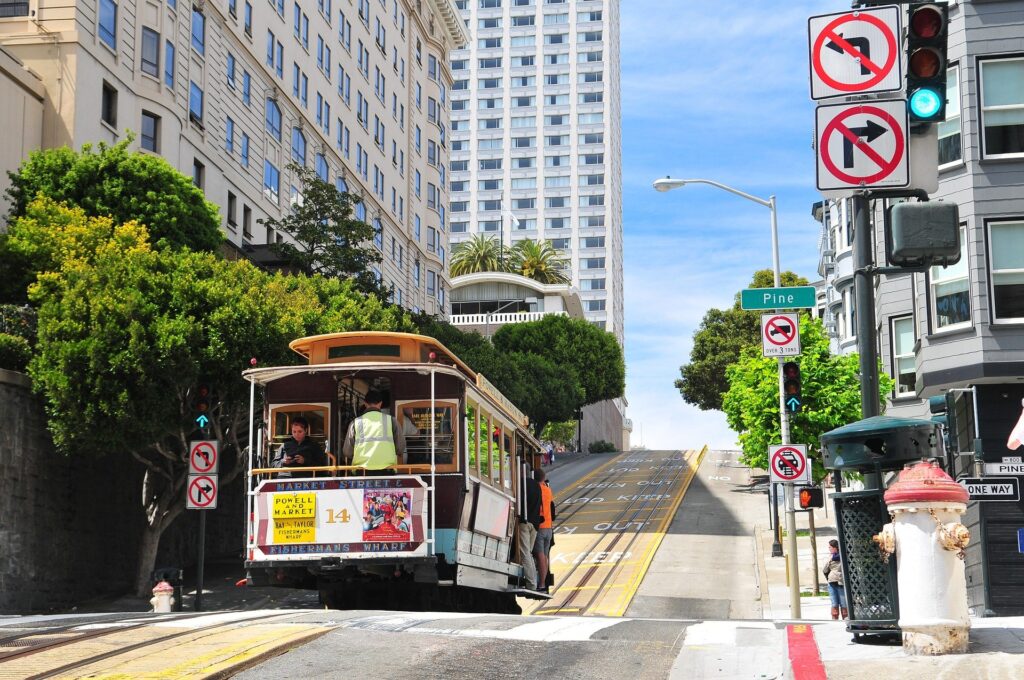
About the Cable Cars in San Francisco
Our cable car system is the last manually operated cable car system in the entire world! Listed as a National Historic Landmark in 1964, today the cable cars are operated by the San Francisco Municipal Railway (also known as the Muni).
While there were 23 different cable car lines over the years, only three lines currently run today. The three SF cable cars lines are: California, Powell/Hyde, and Powell/Mason. The latter two start at the intersection of Powell and Market Streets, continuing to Fisherman’s Wharf. The California line starts at California and Market Streets, continuing to Van Ness Avenue.
You can visit the Cable Car Museum to learn even more about the history and mechanics of the cable cars. In fact, the Museum is housed on-site where the cable car power is centralized!
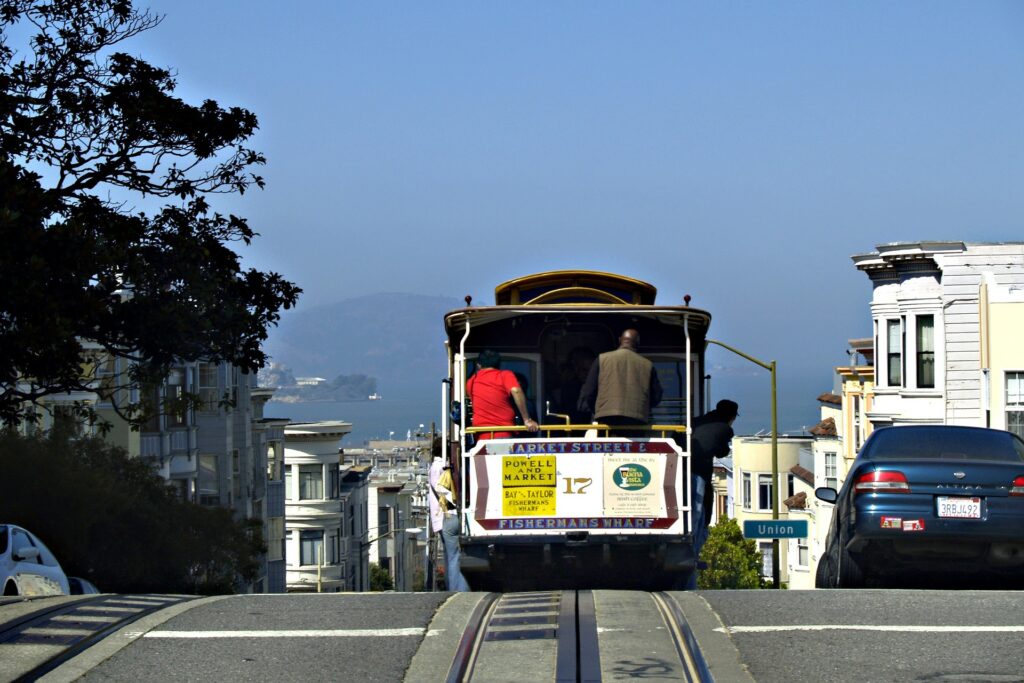
What’s the difference between cable cars and streetcars?
San Francisco has both cable cars and heritage streetcars. The streetcars operate along Market Street and the Embarcadero; you can check out our F-Line San Francisco Trolley Tour to experience the heritage streetcars, too.
The streetcars operate via electric lines overhead, which are easily identifiable on the streets. The cable cars, however, operate via underground cables. There are two Muni employees on board every cable car: the Grip and the Conductor. The Grip operates the cable car, while the Conductor handles fares and tickets.
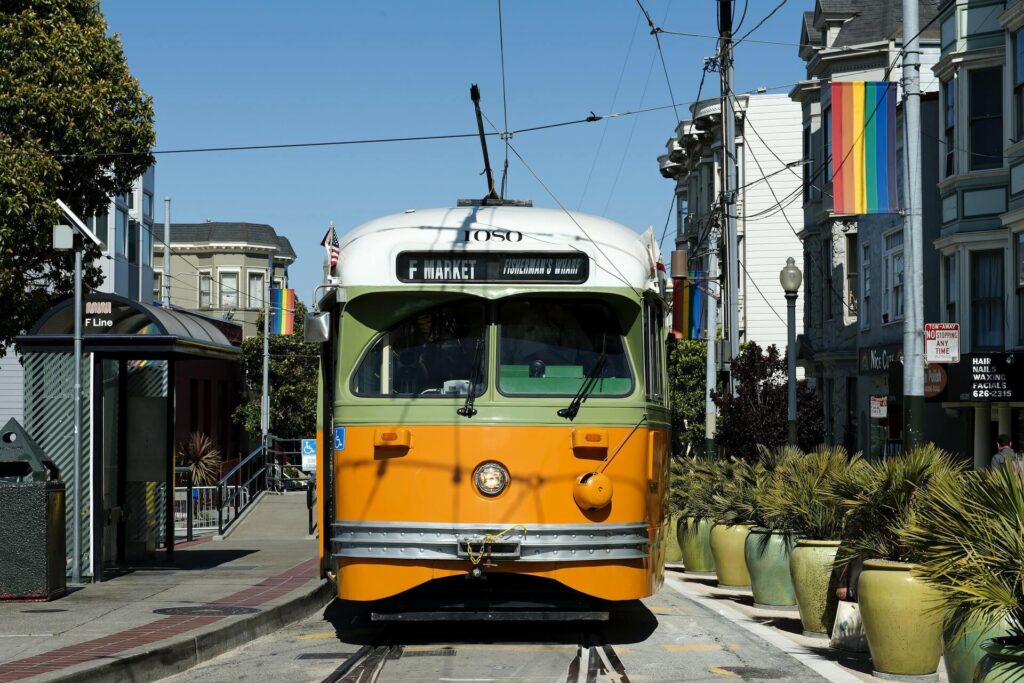
The cable cars in San Francisco are primarily used by tourists, not locals. The California line does go to the Financial District, so some commuters will utilize that option, but buses and trolleys tend to have a more widespread group of riders.
Want to feel more like a local in San Francisco? Check out our expert local guide to visiting San Francisco to get all the details on where to go around the city.
Get Tickets for the SF Cable Cars
If you board the cable car at a turntable (start/end of the line) or at certain other primary stops, then you need to purchase your tickets before boarding. If you board along the route from any other stop, you can purchase your tickets on board from the conductor.
You can download the MuniMobile app to purchase your tickets by phone at your convenience. If you buy your tickets at the turntables, you cannot pay with cash. If you intend to purchase your cable car tickets by cash, you’ll need to board at another stop along the line and pay with exact change after boarding. The conductor will check tickets and you can purchase yours at that time.
The only discounted tickets are for seniors (65+) or for rides before 7am or after 9pm.
We recommend you look into purchasing a Visitor Passport during your trip to San Francisco. There are 1-, 3-, and 7-day Visitor Passports available that allow you unlimited rides on all Muni, Muni Metro, historic streetcars, and cable cars. This is the best option if you want to hop on and off several times or enjoy various modes of transport during your visit!
Get all the details on current fares and travel options on the Muni website.
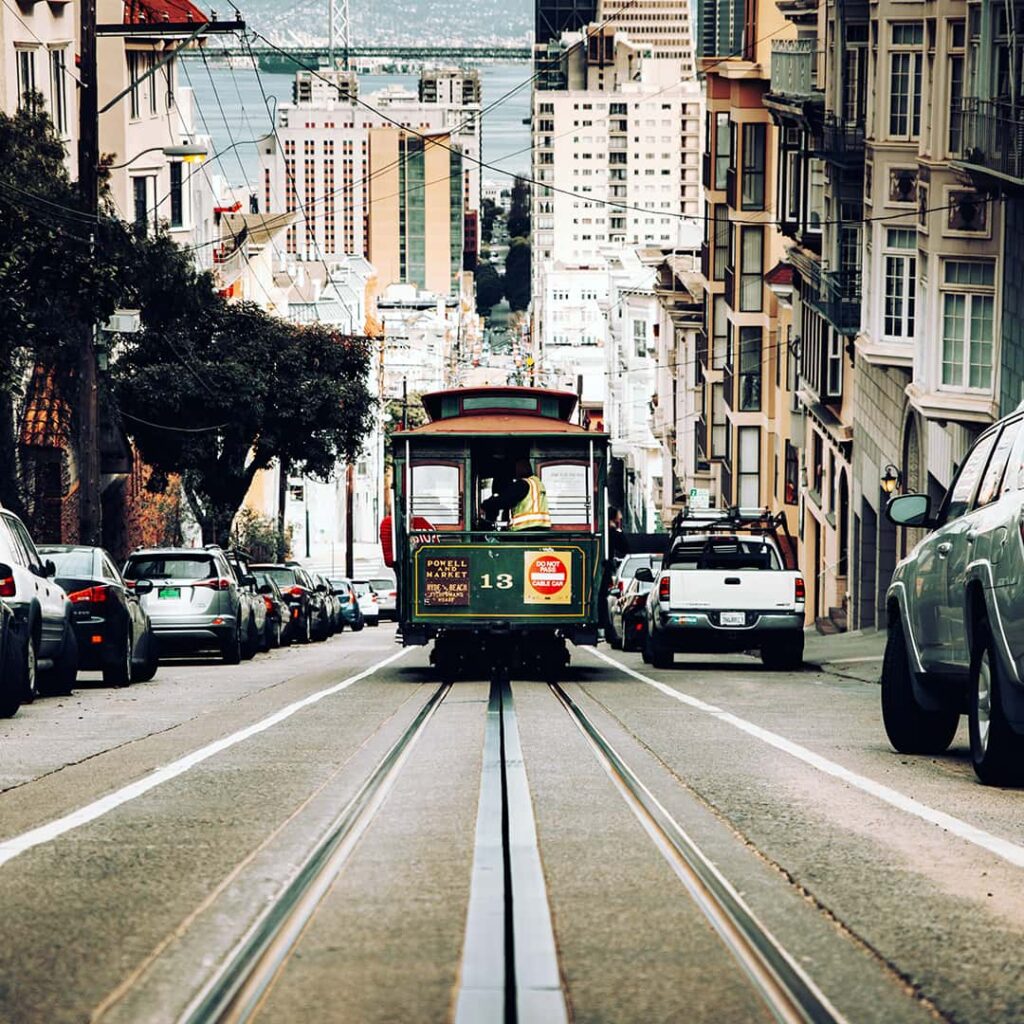
Boarding & Riding the Cable Cars in San Francisco
You can board the SF cable cars at the beginning or end of their lines — called the turntables — or you can board at any stop along the route. The stops are marked by brown and white signposts.
If you board a cable car from one of the stops along the line, you’ll want to stick your arm out and wave them down to stop. Think of it like hailing a taxi. If you’d prefer to board the cable cars at the turntables, you’ll likely need to wait in a long line. It does move quickly, but just plan ahead and be prepared to wait.
To get off, you’ll want to tell the grip (with a full block’s warning) that you’d like the next stop, please. The cords overhead just ring the bell; they don’t request a stop.
The Powell/Hyde line offers excellent views of Coit Tower, Alcatraz Island, and San Francisco Bay, as well as crossing the iconic Lombard Street.
The Powell/Mason line brings you to the bottom of Lombard Street, which is the more common photography spot you have likely seen on Instagram.
The California Line brings you via Nob Hill and into the Financial District, where you’ll find the Transamerica Pyramid and other notable landmarks.
Want to know about other landmarks in the city? Read what San Francisco is known for and explore it all!
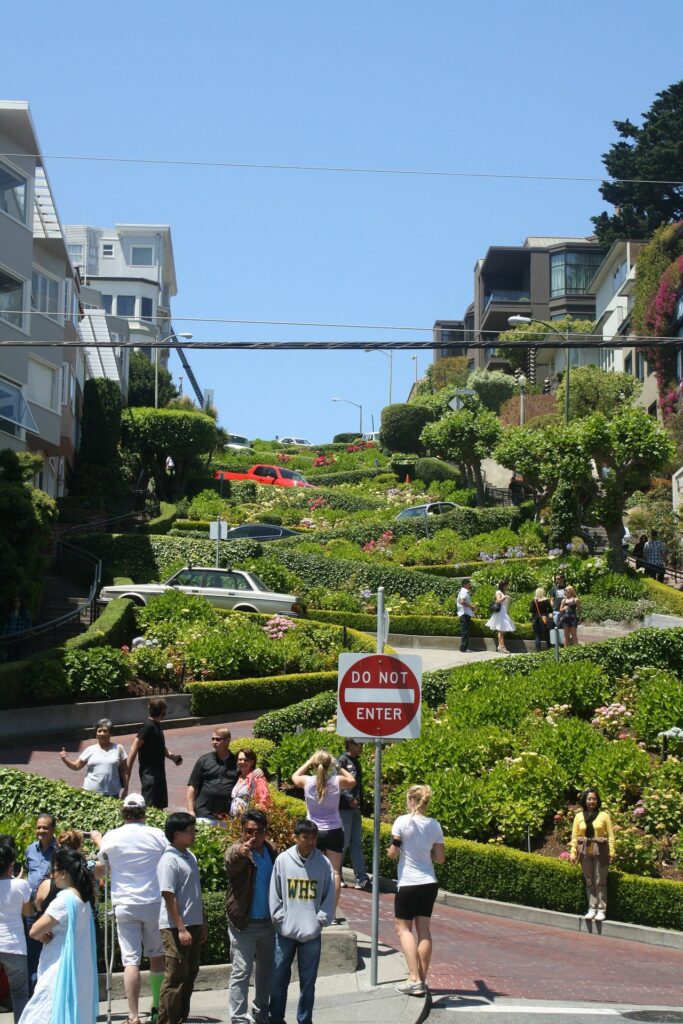
SF Cable Car Tours to Learn More!
Now that you know how the cable cars work in San Francisco, we hope you’ll consider joining us on our SF Cable Car Tour to learn even more about the places you pass along the route. Our immersive audio tours help you truly experience the city, hearing the stories of people who impacted SF over the years.
While you can ride the cable cars and see the sights, it’s so much more enjoyable to learn about the buildings, neighborhoods, and landmarks along the way!
Download the free TourCentric app to get more of our local recommendations and check out our available tours:




